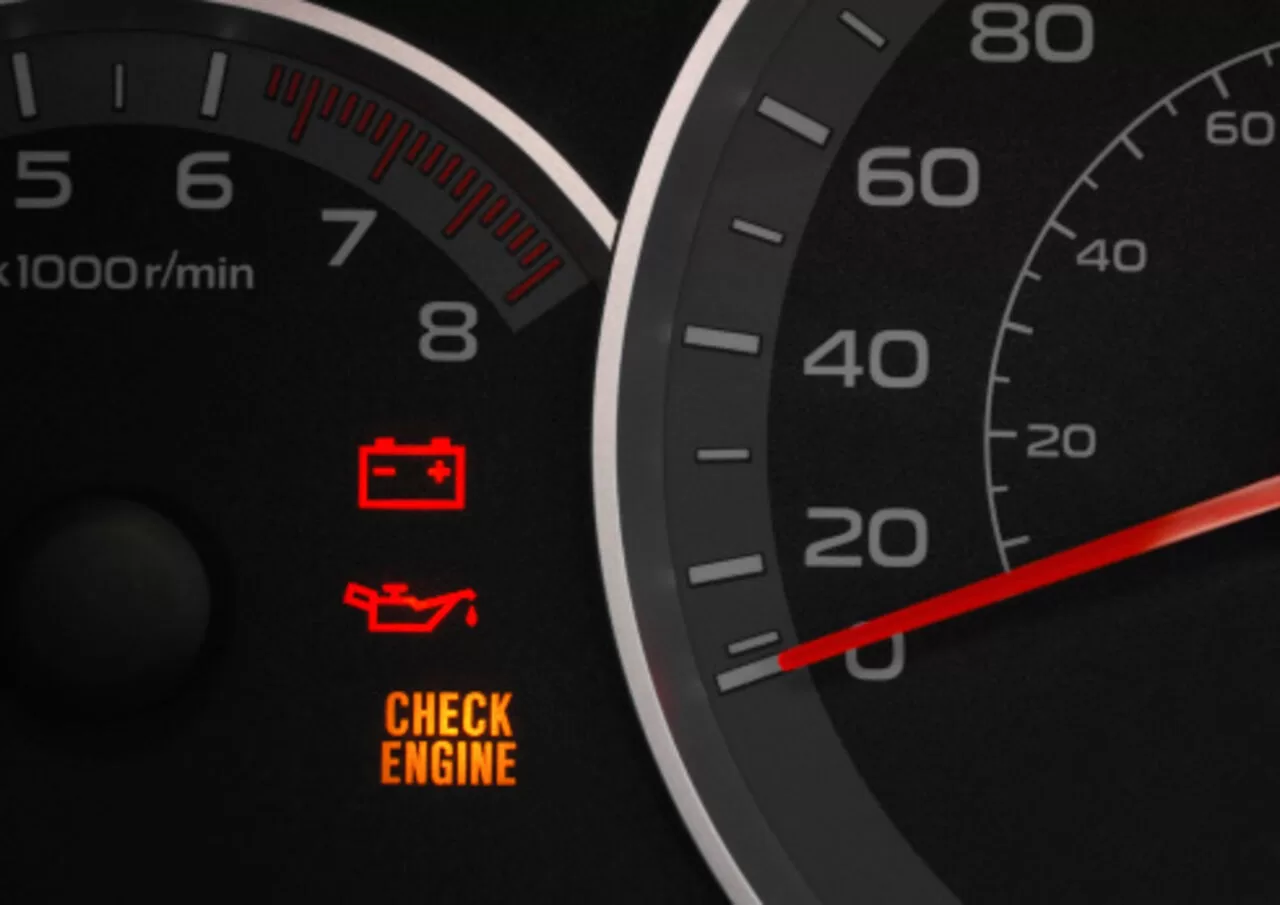Whenever you are in the car, do you see the Toyota check engine light flashing on the control panel? The question is, what problem is causing that small light to shine? Before you freak out, it’s important to pinpoint the problem and look for its solution. In this article, we will see what can help you avoid a “check engine” warning.
What Is A Toyota Check Engine Light?
Toyotas are equipped with an electronic system known as On-Board Diagnostic (OBD). The check engine light monitors the state of the engine and emissions-control equipment. If a problem exists, the dashboard check engine indicator will illuminate.
If you see a Toyota check engine light before starting the vehicle, fix it as fast as you can. It is crucial for preventing extensive damage to the engine and maintaining peak performance. You may have your Toyota checked out and fixed at any professional service shop or official Toyota dealership.
Why is it important to consider the Toyota check engine light?
Toyota’s check engine light might be anything from a simple problem to something more serious. The problem is as simple as a loose gas cap or as catastrophic as a broken catalytic converter.
Knowing the potential reasons why the check engine light has come on may help drivers decide whether to continue driving or have their cars repaired. Remember that the error code that initially activated the light is saved in your car’s inbuilt system, and you may extract it using a simple tool to determine precisely what is wrong with the engine. You’ll end up saving money if you do things on your own.
But it is very important to take quick technical action if the issue is intense. This is because any delay can lead to internal damage. Moreover, driving while the check engine light appears may also reduce fuel efficiency or release lots of toxins that ultimately demand more serious maintenance that is more costly.
Keeping a watch on the check engine light and resolving any issues as soon as possible is a wise practice that will add years to the vehicle’s useful life, in addition to extending its lifespan and enhancing its overall performance.
What causes the Toyota check engine light to turn on?
If you’re driving a Toyota and the “check engine” light comes on, consider the following:
-
You either need to tighten or replace your gas cap
Reason:
The Toyota check engine light gas cap should be the first thing you check. If the gas cap is loose, damaged, or missing, the check engine light will illuminate to let you know so that you can avoid wasting fuel as a result of evaporation.
Solution:
For this, you have to close the fuel line and preserve pressure within the fuel tank, which prevents gasoline vapors from leaking into the air while the vehicle is parked.
-
It’s time to get a new oxygen sensor
Reason:
An oxygen sensor problem that wrongly measures the amount of unmodified oxygen in the exhaust pipe may lead to the corrosion of the spark plugs and the catalyst adapter. It also increases fuel consumption and increases the possibility that the engine will break down.
Solution:
There is a possibility that the oxygen sensor in your vehicle has to be changed.
-
Troubleshoot the high-voltage alert
Reason:
The high voltage of the Toyota check engine light is most likely caused by an electrical circuit problem. A malfunctioning power source or voltage converter can be a possible result.
Solution:
Managing and resolving the issue is vital. Some problems may be fixed with a quick adjustment, like swapping out the battery, while others require a more complex solution.
-
A new mass airflow sensor is necessary for your vehicle
Reason:
If the mass airflow sensor is faulty, not only will the efficiency of your vehicle and its gas economy decrease, but it also has the potential to cause damage to the spark plugs, oxygen detectors, and catalytic converter.
Solution:
Your mass airflow sensor needs to monitor the amount of air that is being sucked into the engine so that you can determine how much fuel is needed for the engine to function at its best.
-
Reinstall your spark plugs or plug wires
Reason:
Your car’s burning chamber contains a combination of air and fuel, which is ignited by spark plugs. The charge from the ignition coil is then conducted to the spark electrodes via conductors. Deficient spark plugs or wires may decrease performance and fuel efficiency.
Solution:
In this case, it becomes vital to replace your spark plugs or wires because the oxygen sensors and Toyota check engine light coils may be damaged. Additionally, they have the potential to clog the catalytic converter if worn.
Conclusion
The check engine light gives a general sense of what is amiss with an automobile, often in a clear or hazy manner. It cannot, however, take the place of periodic upkeep or a qualified mechanic. In other words, schedule routine auto maintenance before the check engine light illuminates.
The water pump is going to break, either of the ball hinges is worn, or the air conditioner will quit blowing cool air in the middle of August, but it won’t let you know about any of these things. When the check engine light actually warns you that you’re possibly overdue for maintenance, many individuals mistakenly believe that it performs the same function as a periodic warning.
In numerous instances, the harm has already been done by then. The upkeep of a car can be divided into two steps. Preventive upkeep is the first and most important. These tune-ups should be performed routinely rather than in response to problems. The second is routine diagnostic upkeep, which reacts to modifications like fresh noises, smells, or sensations while you drive.
The fundamental requirements for your car, such as how frequently you should change the coolant and oil as well as the brake pads, should also be known to you. Long-term time and financial savings can be achieved by doing a little research on your particular vehicle and its fundamental mechanics. If you follow a regular maintenance schedule religiously, you might never even notice the tiny orange engine light turn on.
FAQ
How do I turn the Toyota check engine light vsc trac vsc off?
Determine and resolve the problem that triggers the Toyota check engine light trac off, VSC, TRAC, and VSC OFF to illuminate. Utilize an OBD-II scanner or consult a mechanic for assistance. It is necessary to consult the owner’s manual in order to clear the check engine light on a Toyota.
Why does the check engine light turn on in my Toyota?
Your vehicle’s “check engine” warning light might come on for a number of reasons. The oxygen sensor, the gas cap, the catalytic converter, the ignition coil, the spark plugs, and the mass air flow sensor are all potential reasons.
How do I clear the Toyota check engine light?
The Toyota check engine light reset cannot be done until the underlying problem has been resolved. Toyota check engine light symbols may be removed by a piece of diagnostic equipment or service after the problem has been repaired.
How do I clear the Toyota check engine light?
To clear the Toyota check engine light, you must first determine the cause of the problem. You may do this by utilizing an OBD-II scanner or by reading the guiding manual that was given to you.





I was very pleased to find this web-site.I wanted to thanks for your time for this wonderful read!! I definitely enjoying every little bit of it and I have you bookmarked to check out new stuff you blog post.
Perfect piece of work you have done, this web site is really cool with wonderful info .